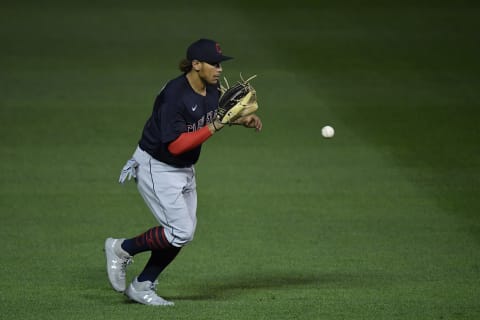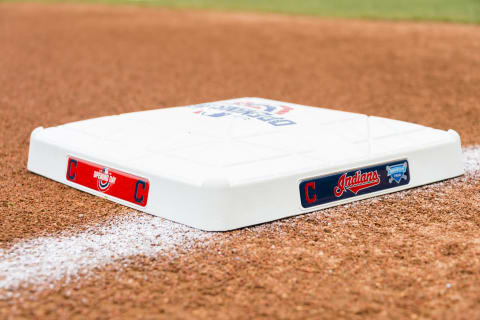Cleveland Indians: Three things that went wrong in April


Three things that went wrong in April for the Cleveland Indians
While there are plenty of things that went right for the Cleveland Indians in April, let’s flip it around for a moment and look at where improvements need to be made.
The Cleveland Indians closed out the first month of the year with a 12-12 record following a 5-3 win over the Chicago White Sox on Friday (April 30). For a team that always starts slow, a .500 start to the year is not too much cause for concern. After all, the baseball season is a marathon, not a sprint.
However, some worrying patterns have been on display during the Tribe’s first 24 games, and they are the issues that can derail a season if the team does not find a fix for each of them. This is especially true when you’re playing in what will be one of the most competitive divisions in baseball this season.
The Kansas City Royals currently sit atop the American League Central. A game and a half back of the Royals, in second place, are the Chicago White Sox who have combined great starting pitching with one of the best offenses, statistically, in baseball to jump out to a fast start. As for the current division champions, the Minnesota Twins have struggled early, but with the talent on their roster, they will be in the fight come September. Against these much more, well-rounded teams, the Cleveland Indians will need to make improvements to keep pace with their rivals and challenge for the division crown.
The focus of this article is on the negatives from last month, so let’s take a look at three things, in particular, that have gone wrong for the Indians, so far. If you’d like a more uplifting article about April, take a look at our three things that went right.

Walks will kill ya
Since 2016, the Cleveland Indians pitching has allowed the fewest walks in all of baseball. Former pitching coach, Mickey Callaway, installed a pitching philosophy that focused on efficiency with pitching counts by working from in front and peppering the strike zone. When Carl Willis returned to the club as pitching coach in 2018 following Callaway’s departure, that attitude carried over.
But after one month of baseball in 2021, the Indians sit in the middle of the pack, 16th in Major League Baseball, in walks allowed (89). The worst offenders have been the two pitchers at the back-end of the rotation. Triston McKenzie is averaging nearly nine (NINE!) walks per nine innings. His wayward command has tarnished his, at times, spectacular pitching. In 18 2/3 innings this season, he has given up 18 free passes, but has struck out 29.
As for the other transgressor of one of pitching’s cardinal sins, Logan Allen, it likely was one of the main contributors to him losing his spot on the roster after a disastrous outing on April 26 when he allowed six runs in 1 1/3 innings versus the Twins.
Not only have the walks, and poor command led to a deluge of run-scoring by opposing teams – McKenzie and Allen own ERAs of 6.27 and 9.19, respectively – but the short outings have put immense strain on the bullpen who have racked up innings trying to complete nine innings. Neither starter has made it past the fifth inning in any of their major league starts this season.
Putting runners on base via the walk is always a recipe for disaster for young pitchers. If the Indians are to clinch a playoff berth this season, the back-end of the rotation will need to cut down on the walks not only to limit the opportunities opposing batter shave to drive in runs, but to also pitch deeper into games and take pressure off the relievers.

Poor clutch hitting
Going into the 2021 season Cleveland Indians fans weren’t expecting an offensive juggernaut to entertain them for the 81 games scheduled at Progressive Field in Cleveland. But the hitting has been even more horrendous than anticipated, barring a couple of standouts who have started the year very well.
One particular bugbear for the Tribe faithful has been the result with runners in scoring position. The Indians hit .216 with RISP, in April, which was fourth-worst in the AL. The ineptitude at the plate in this situation is made more irksome by the fact that the opportunities to hit with runners in scoring position have been so rare.
To illustrate the point, the Indians are second-worse in team batting average in all of baseball (.207), and third-worst in OBP (.283). If those numbers don’t pick up, hitters will need to take more advantage of the few chances they have at the dish to drive a runner home.
Other Tribe hitters might do well to study the approaches of Franmil Reyes and Jordan Luplow who have had great success hitting with runners in scoring position this season. Reyes is swinging at a .300 clip, while Luplow leads the team with a .357 average in such situations.

Empty bases
It was eluded to earlier, but the Tribe are terrible at getting on base. Third-worst in all of baseball with a .283 team on-base percentage to be exact. This has been a big reason for the lackluster run-scoring. The clutch hitting may be bad, but if there aren’t many opportunities to knock in runs from second or third in the first place, how can one expect the run-scoring to get any better?
The situation has been particularly bad at the top of the lineup. The first two hitters in any MLB batting order have one main role, and that is to get on base so that the best hitters below them have the chance to drive them home. For the Indians, those top two hitters have, aside from the number nine hitter, been the worst at that job.
Collectively, the leadoff spot for the Tribe owns a .135 batting average and .252 OBP; both numbers are worst in all of baseball. It doesn’t get much better at number two in the order, as the numbers marginally improve from abysmal to a slightly less terrible .172 average, second-worst in the MLB, and a .294 OBP.
At the other end of the lineup, things are just as dire. The hitting at bottom three spots of the order combined to a .168 average and a .251 OBP in April. All of this means that half the lineup has struggled, mightily, to contribute anything towards the scoring of runs, either by getting on base or recording a hit with a runner in scoring position. So, the burden falls almost wholly on the same four guys who have occupied the remaining four slots in the lineup. That is not sustainable.
If the Cleveland Indians can take solace in anything with regards to the lineup’s struggles to find a way to get on base it is this: things can only get better.
dark. Next. Three things that went right in April